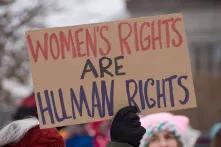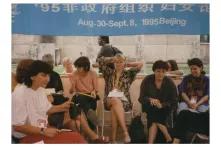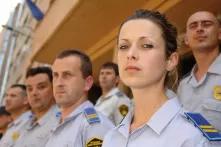Beijing+20 - Women and Armed Conflict
Wars and armed – above all regional and innerstate – conflicts have increased significantly over the past few years. In the majority of cases, women are not directly involved as combatants. Yet women and children especially are often specifically targeted and entrapped between the two warring factions. Moreover, land mines continue to pose a threat to the civilian population, even decades after the conflict has ended. And even though women(’s groups) in many countries and regions of conflict are the first to develop reconciliation approaches and take on an important role within the peace alliances – acting as intermediaries between the warring parties – they are frequently excluded from the power structures within which political actors rule on acts of war and negotiate ceasefires and peacekeeping solutions. With this in mind, the Beijing Platform for Action cited the following Strategic Objectives, as far back as twenty years ago:
- Increase the participation of women in conflict resolution at decision-making levels and protect women living in situations of armed and other conflicts and fleeing or in refugee camps, or under foreign occupation;
- Reduce military expenditures and limit armaments, or disarm;
- Promote non-violent forms of conflict resolution and reduce the incidence of human rights abuse in conflict situations;
- Provide assistance to the women of the colonies and non-self-governing territories.
Present state of implementation:
Following on from the Beijing Platform for Action, numerous countries and institutions, e.g. the EU and NATO, have – on the basis of UN Resolution 1325 on “Women, Peace and Security” as well as a variety of follow-up resolutions (1820, 1888, 1889, 1960, 2106, 2122) – drafted national action plans and/or measures to increase the participation of women, above all female civil society actors, in conflicts and also to levy sanctions on gender-based violence in war and conflict. Women have been involved in the negotiations in individual conflict-affected countries, such as Liberia, the DR of the Congo and Sudan. Female gender advisors and, increasingly, female soldiers are deployed in peacekeeping campaigns, and a gender-sensitive perspective postulated. In isolated cases, international criminal courts (e.g. Sierra Leone, Cambodia, Bosnia) have recognized gender-based acts of violence as crimes against humanity or as acts of war.
Yet, global armament goes on, as does the use of gender-based violence in the majority of ongoing conflicts. And female peace activists continue to be largely excluded from the official conflict resolution level and from ceasefire agreements. Sexualized acts of violence remain a part of war strategies, and the perpetrators are only prosecuted in exceptional circumstances. Moreover, women fleeing with their children are completely unprotected from (sexualized) violence, regardless of whether they are in flight or in camps. And the means of support remain few and far between.
Beijing+20 in the Regions
Good to Know
- Progress of the World's Women 2015/2016: detailed report by the UN Women on the economical barriers facing women, and strategies of improving the political participation of women on a global scale. more>>
- Beijing Platform for Action
Read the 1995 Beijing Declaration and Platform for Action here
[PDF].
An overview the Platform's 12 critical areas of concern by the UN Women. more>> - Women in Armed Conflicts: in the context of the CSW 59, the GWI co-hosted an event at concering a pressing issue for the Platform - women in armed conflicts. more>>
GWI-Newsletter
Beijing+20 - critical areas
- Women and poverty
- Education and training of women
- Women and health
- Violence against women
- Women and armed conflict
- Women and the economy
- Women in power and decision-making
- Institutional mechanisms for the advancement of women
- Human rights of women
- Women and the media
- Women and the environment
- The girl child
- Across Areas


